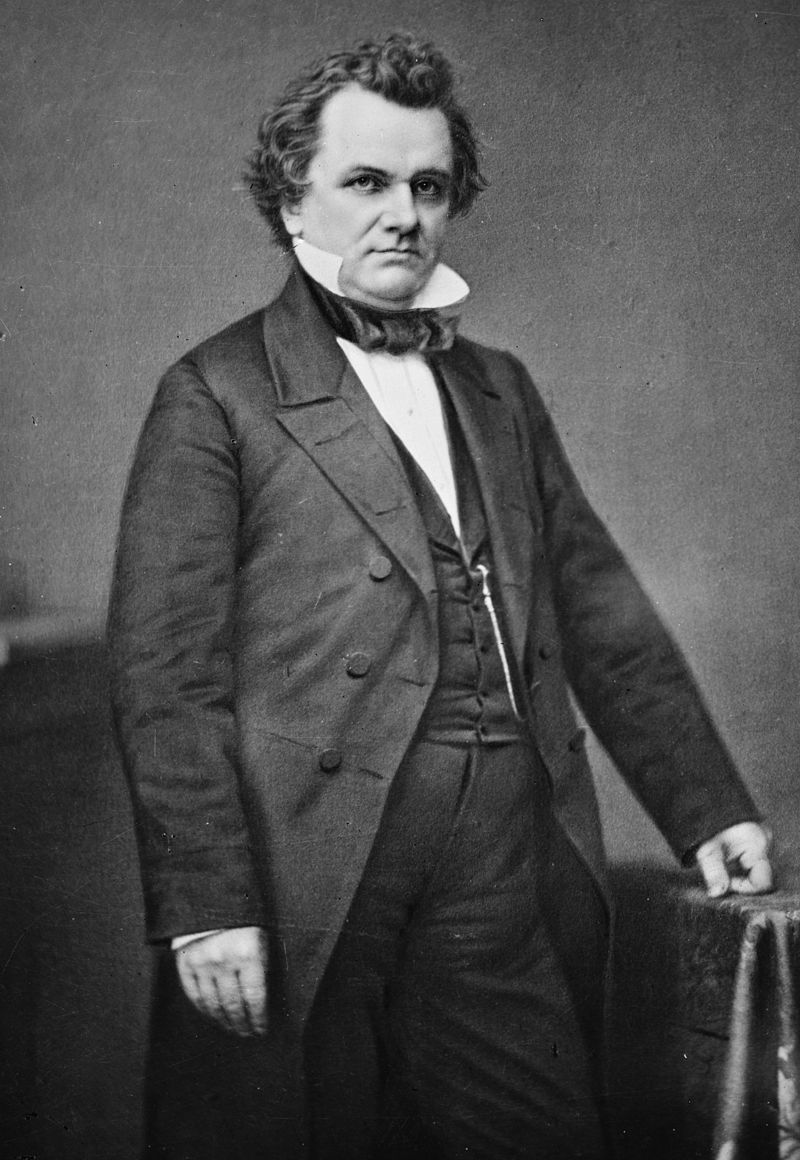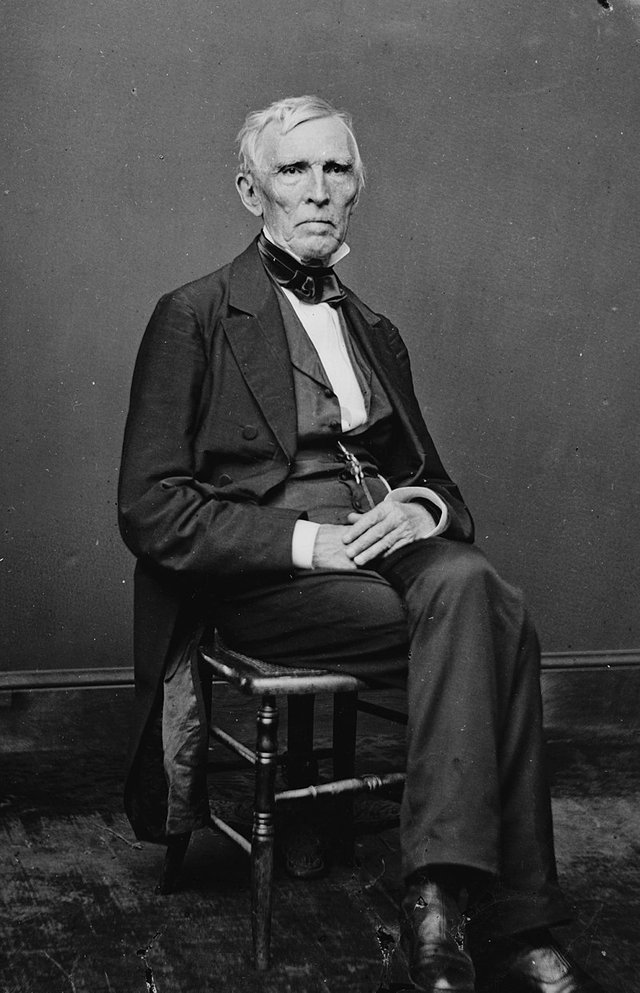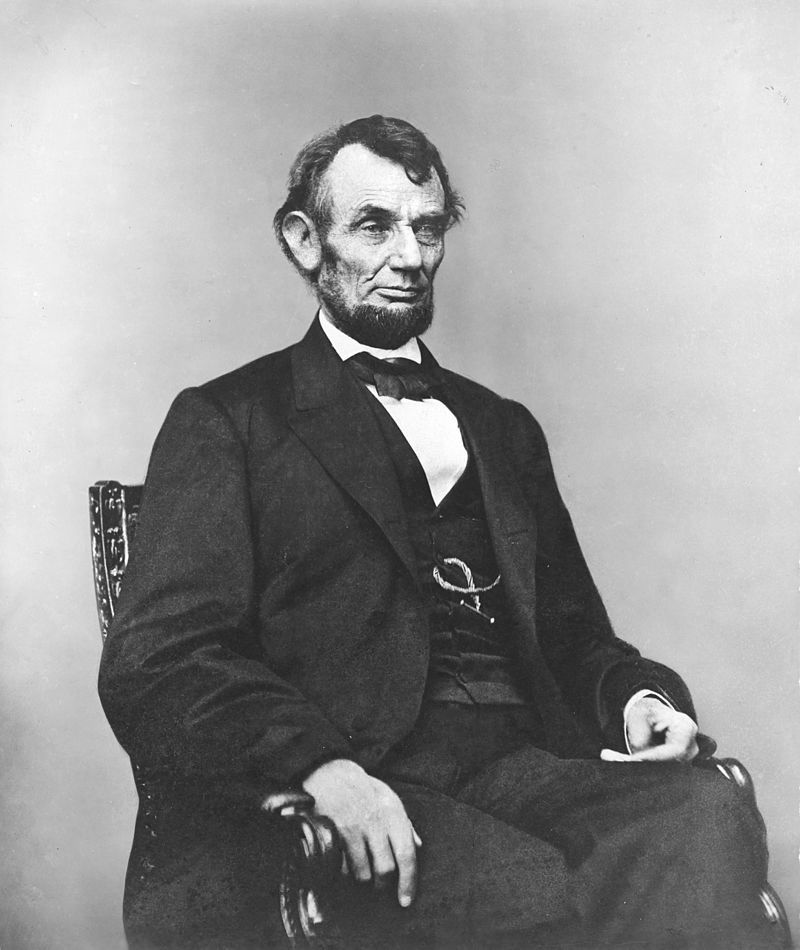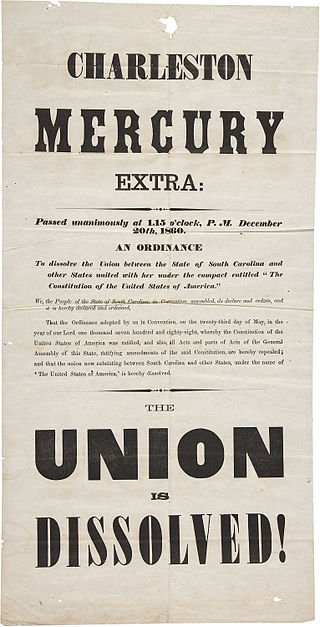History: Rise And Fall Of America: The Civil War
This Is Part 2 Of Previous Article...
Slavery
Slavery was a major cause of disunion. Although there were opposing views even in the Union States, most northern soldiers were largely indifferent on the subject of slavery,while Confederates fought the war largely to protect a southern society of which slavery was an integral part. From the anti-slavery perspective, the issue was primarily about whether the system of slavery was an anachronistic evil that was incompatible with republicanism. The strategy of the anti-slavery forces was containment—to stop the expansion and thus put slavery on a path to gradual extincion. The slave-holding interests in the South denounced this strategy as infringing upon their Constitutional rights.Southern whites believed that the emancipation of slaves would destroy the South's economy, due to the large amount of capital invested in slaves and fears of integrating the ex-slave black population. In particular, southerners feared a repeat of "the horrors of Santo Domingo", in which nearly all white people – including men, women, children, and even many sympathetic to abolition – were killed after the successful slave revolt in Haiti. Historian Thomas Fleming points to the historical phrase "a disease in the public mind" used by critics of this idea, and proposes it contributed to the segregation in the Jim Crow era following emancipation.These fears were exacerbated by the recent attempts of John Brown to instigate an armed slave rebellion in the South.
Slavery was illegal in much of the North, having been outlawed in the late 18th and early 19th centuries. It was also fading in the border states and in Southern cities, but it was expanding in the highly profitable cotton districts of the rural South and Southwest. Subsequent writers on the American Civil War looked to several factors explaining the geographic divide..
Sectionalism
Sectionalism refers to the different economies, social structure, customs and political values of the North and South. Regional tensions came to a head during the War of 1812, resulting in the Hartford Convention which manifested Northern dissastisfaction with a foreign trade embargo that affected the industrial North disproportionately, the Three-Fifths Compromise, dilution of Northern power by new states, and a succession of Southern Presidents. Sectionalism increased steadily between 1800 and 1860 as the North, which phased slavery out of existence, industrialized, urbanized, and built prosperous farms, while the deep South concentrated on plantation agriculture based on slave labor, together with subsistence farming for poor freedmen. In the 1840s and 50s, the issue of accepting slavery (in the guise of rejecting slave-owning bishops and missionaries) split the nation's largest religious denominations (the Methodist, Baptist and Presbyterian churches) into separate Northern and Southern denominations.
Historians have debated whether economic differences between the industrial Northeast and the agricultural South helped cause the war. Most historians now disagree with the economic determinism of historian Charles A. Beard in the 1920s and emphasize that Northern and Southern economies were largely complementary. While socially different, the sections economically benefited each other.
Protectionism
Slave owners preferred low-cost manual labor with no mechanization. Northern manufacturing interests supported tariffs and protectionism while southern planters demanded free trade,The Democrats in Congress, controlled by Southerners, wrote the tariff laws in the 1830s, 1840s, and 1850s, and kept reducing rates so that the 1857 rates were the lowest since 1816. The Republicans called for an increase in tariffs in the 1860 election. The increases were only enacted in 1861 after Southerners resigned their seats in Congress.The tariff issue was a Northern grievance. However, neo-Confederate writers have claimed it as a Southern grievance. In 1860–61 none of the groups that proposed compromises to head off secession raised the tariff issue. Pamphleteers North and South rarely mentioned the tariff.
States' rights
The South argued that each state had the right to secede—leave the Union—at any time, that the Constitution was a "compact" or agreement among the states. Northerners (including President Buchanan) rejected that notion as opposed to the will of the Founding Fathers who said they were setting up a perpetual union. Historian James McPherson writes concerning states' rights and other non-slavery explanations:
While one or more of these interpretations remain popular among the Sons of Confederate Veterans and other Southern heritage groups, few professional historians now subscribe to them. Of all these interpretations, the states'-rights argument is perhaps the weakest. It fails to ask the question, states' rights for what purpose? States' rights, or sovereignty, was always more a means than an end, an instrument to achieve a certain goal more than a principle.
Territorial crisis
Between 1803 and 1854, the United States achieved a vast expansion of territory through purchase, negotiation, and conquest. At first, the new states carved out of these territories entering the union were apportioned equally between slave and free states. It was over territories west of the Mississippi that the proslavery and antislavery forces collided.[48]
With the conquest of northern Mexico west to California in 1848, slaveholding interests looked forward to expanding into these lands and perhaps Cuba and Central America as well.[49][50] Northern "free soil" interests vigorously sought to curtail any further expansion of slave territory. The Compromise of 1850 over California balanced a free-soil state with stronger fugitive slave laws for a political settlement after four years of strife in the 1840s. But the states admitted following California were all free: Minnesota (1858), Oregon (1859) and Kansas (1861). In the southern states the question of the territorial expansion of slavery westward again became explosive. Both the South and the North drew the same conclusion: "The power to decide the question of slavery for the territories was the power to determine the future of slavery itself.
By 1860, four doctrines had emerged to answer the question of federal control in the territories, and they all claimed they were sanctioned by the Constitution, implicitly or explicitly.[54] The first of these "conservative" theories, represented by the Constitutional Union Party, argued that the Missouri Compromise apportionment of territory north for free soil and south for slavery should become a Constitutional mandate. The Crittenden Compromise of 1860 was an expression of this view.
The second doctrine of Congressional preeminence, championed by Abraham Lincoln and the Republican Party, insisted that the Constitution did not bind legislators to a policy of balance—that slavery could be excluded in a territory as it was done in the Northwest Ordinance of 1787 at the discretion of Congress, thus Congress could restrict human bondage, but never establish it. The Wilmot Proviso announced this position in 1846.
Sen. Stephen Douglas, author of the Kansas–Nebraska Act of 1854
![800px-Stephen_Arnold_Douglas.jpg]
( )
)
Sen. John J. Crittenden, of the 1860 Crittenden Compromise

Senator Stephen A. Douglas proclaimed the doctrine of territorial or "popular" sovereignty—which asserted that the settlers in a territory had the same rights as states in the Union to establish or disestablish slavery as a purely local matter.The Kansas–Nebraska Act of 1854 legislated this doctrine. In Kansas Territory, years of pro and anti-slavery violence and political conflict erupted; the congressional House of Representatives voted to admit Kansas as a free state in early 1860, but its admission in the Senate was delayed until January 1861, after the 1860 elections when southern senators began to leave.
The fourth theory was advocated by Mississippi Senator Jefferson Davis, one of state sovereignty ("states' rights"),also known as the "Calhoun doctrine",named after the South Carolinian political theorist and statesman John C. Calhoun. Rejecting the arguments for federal authority or self-government, state sovereignty would empower states to promote the expansion of slavery as part of the federal union under the U.S. Constitution. "States' rights" was an ideology formulated and applied as a means of advancing slave state interests through federal authority. As historian Thomas L. Krannawitter points out, the "Southern demand for federal slave protection represented a demand for an unprecedented expansion of federal power."[67][68] These four doctrines comprised the major ideologies presented to the American public on the matters of slavery, the territories and the U.S. Constitution prior to the 1860 presidential election.
Nationalism and honor
Nationalism was a powerful force in the early 19th century, with famous spokesmen such as Andrew Jackson and Daniel Webster. While practically all Northerners supported the Union, Southerners were split between those loyal to the entire United States (called "unionists") and those loyal primarily to the southern region and then the Confederacy. C. Vann Woodward said of the latter group,
A great slave society ... had grown up and miraculously flourished in the heart of a thoroughly bourgeois and partly puritanical republic. It had renounced its bourgeois origins and elaborated and painfully rationalized its institutional, legal, metaphysical, and religious defenses ... When the crisis came it chose to fight. It proved to be the death struggle of a society, which went down in ruins.
Perceived insults to Southern collective honor included the enormous popularity of Uncle Tom's Cabin (1852) and the actions of abolitionist John Brown in trying to incite a slave rebellion in 1859.
While the South moved towards a Southern nationalism, leaders in the North were also becoming more nationally minded, and they rejected any notion of splitting the Union. The Republican national electoral platform of 1860 warned that Republicans regarded disunion as treason and would not tolerate it: "We denounce those threats of disunion ... as denying the vital principles of a free government, and as an avowal of contemplated treason, which it is the imperative duty of an indignant people sternly to rebuke and forever silence."The South ignored the warnings: Southerners did not realize how ardently the North would fight to hold the Union together.
Lincoln's election
The election of Abraham Lincoln in November 1860 was the final trigger for secession.
Efforts at compromise, including the "Corwin Amendment" and the "Crittenden Compromise", failed. Southern leaders feared that Lincoln would stop the expansion of slavery and put it on a course toward extinction. The slave states, which had already become a minority in the House of Representatives, were now facing a future as a perpetual minority in the Senate and Electoral College against an increasingly powerful North. Before Lincoln took office in March 1861, seven slave states had declared their secession and joined to form the Confederacy.
According to Lincoln, the people had shown that they can be successful in establishing and administering a republic, but a third challenge faced the nation, maintaining a republic based on the people's vote against an attempt to overthrow it
Abraham Lincoln in 1864

Secession crisis
The election of Lincoln caused the legislature of South Carolina to call a state convention to consider secession. Prior to the war, South Carolina did more than any other Southern state to advance the notion that a state had the right to nullify federal laws, and even to secede from the United States. The convention summoned unanimously voted to secede on December 20, 1860, and adopted the "Declaration of the Immediate Causes Which Induce and Justify the Secession of South Carolina from the Federal Union". It argued for states' rights for slave owners in the South, but contained a complaint about states' rights in the North in the form of opposition to the Fugitive Slave Act, claiming that Northern states were not fulfilling their federal obligations under the Constitution. The "cotton states" of Mississippi, Florida, Alabama, Georgia, Louisiana, and Texas followed suit, seceding in January and February 1861.
Among the ordinances of secession passed by the individual states, those of three—Texas, Alabama, and Virginia—specifically mentioned the plight of the "slaveholding states" at the hands of northern abolitionists. The rest make no mention of the slavery issue, and are often brief announcements of the dissolution of ties by the legislatures. However, at least four states—South Carolina,Mississippi, Georgia, and Texas—also passed lengthy and detailed explanations of their causes for secession, all of which laid the blame squarely on the movement to abolish slavery and that movement's influence over the politics of the northern states. The southern states believed slaveholding was a constitutional right because of the Fugitive slave clause of the Constitution.
These states agreed to form a new federal government, the Confederate States of America, on February 4, 1861.[83] They took control of federal forts and other properties within their boundaries with little resistance from outgoing President James Buchanan, whose term ended on March 4, 1861. Buchanan said that the Dred Scott decision was proof that the South had no reason for secession, and that the Union "was intended to be perpetual", but that "The power by force of arms to compel a State to remain in the Union" was not among the "enumerated powers granted to Congress".[84] One quarter of the U.S. Army—the entire garrison in Texas—was surrendered in February 1861 to state forces by its commanding general, David E. Twiggs, who then joined the Confederacy.
As Southerners resigned their seats in the Senate and the House, Republicans were able to pass bills for projects that had been blocked by Southern Senators before the war, including the Morrill Tariff, land grant colleges (the Morrill Act), a Homestead Act, a transcontinental railroad (the Pacific Railway Acts), the National Banking Act and the authorization of United States Notes by the Legal Tender Act of 1862. The Revenue Act of 1861 introduced the income tax to help finance the war.
On December 18, 1860, the Crittenden Compromise was proposed to re-establish the Missouri Compromise line by constitutionally banning slavery in territories to the north of the line while guaranteeing it to the south. The adoption of this compromise likely would have prevented the secession of every southern state apart from South Carolina, but Lincoln and the Republicans rejected it.[86] It was then proposed to hold a national referendum on the compromise. The Republicans again rejected the idea, although a majority of both Northerners and Southerners would have voted in favor of it,A pre-war February Peace Conference of 1861 met in Washington, proposing a solution similar to that of the Crittenden compromise, it was rejected by Congress. The Republicans proposed an alternative compromise to not interfere with slavery where it existed but the South regarded it as insufficient. Nonetheless, the remaining eight slave states rejected pleas to join the Confederacy following a two-to-one no-vote in Virginia's First Secessionist Convention on April 4, 1861.
The first published imprint of secession, a broadside issued by the Charleston Mercury, December 20, 1860

So That's It For Part 2...Soon I Post Final Part...Stay Tunes For That..
don't cry about the rewards being taken away. you are a lazy thief and don't deserve to earn rewards for the work someone else created. If for some reason you don't understand then read this.
Downvoting a post can decrease pending rewards and make it less visible. Common reasons:
Submit
Bienvenido a la gran familia Steemit, tienes la oportunidad de crecer, recibiendo clases de Negocios, Liderazgo, arte, poesía y comunicación, por eso te invito a participar en esta importante escuela.
Únete aquí
https://discord.gg/hrjxG4G
Welcome to the great Steemit family, you have the opportunity to grow, receiving business classes, Leadership, art, poetry and communication, so I invite you to participate in this important school.
Join here
https://discord.gg/hrjxG4G
Enlace: https://steemit.com/@nellita66
Downvoting a post can decrease pending rewards and make it less visible. Common reasons:
Submit
lots of love
Downvoting a post can decrease pending rewards and make it less visible. Common reasons:
Submit
Welcome to Steem, @iamnothuman!
I am a bot coded by the SteemPlus team to help you make the best of your experience on the Steem Blockchain!
SteemPlus is a Chrome, Opera and Firefox extension that adds tons of features on Steemit.
It helps you see the real value of your account, who mentionned you, the value of the votes received, a filtered and sorted feed and much more! All of this in a fast and secure way.
To see why 2379 Steemians use SteemPlus, install our extension, read the documentation or the latest release : SteemPlus 2.12 : Rewards Tab.
Downvoting a post can decrease pending rewards and make it less visible. Common reasons:
Submit